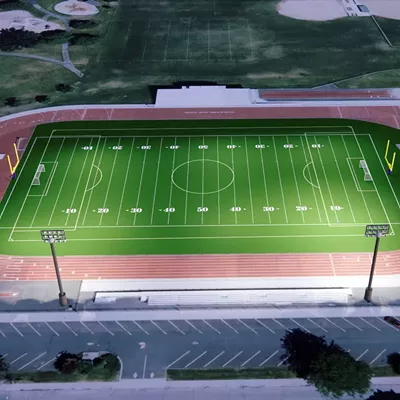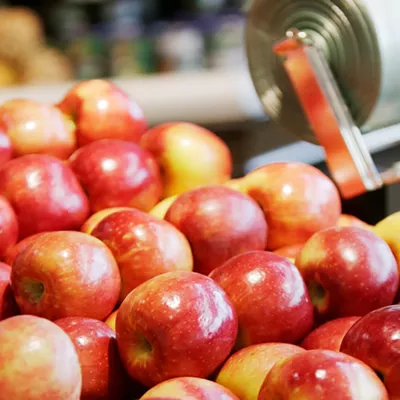There's a memorable Simpsons episode in which all of Springfield is cheering for a monorail. Sassy consultants and engineers convince the town that a monorail is all it takes to firmly place Springfield on the world map and rekindle civic pride. Unable to turn down such a fabulous offer, the town rallies behind the plan, but then, to the tune of gazillions of dollars and a family of possums living under the dashboard (this is, after all, The Simpsons), the train develops all kinds of problems. Springfield finds itself yet again at the losing end of what seemed to be such a great bargain.
Many real American cities have found themselves in deep financial trouble after embarking on similar railroad adventures. But the people behind the current Spokane proposal seem to be using a whole lot more caution than those famous cartoon characters.
"Our goal in planning this is to avoid any pothole and to make absolutely no mistakes," says Spokane County Commissioner Kate McCaslin, who chairs the Light Rail Steering Committee (LRSC). "If we flop on this, for political reasons or any other reasons, we won't get the opportunity again. The Federal Transportation Department is looking really favorably at us right now."
Actually, the federal government is looking favorably at Spokane to the tune of more than $10 million.
"When the Federal Transportation Equity Act was approved by Congress, our light rail project was fully approved at the same time," says Glenn Miles, transportation manager for the Spokane Regional Transportation Council and staff support for LRSC. "First we got $1 million from Congress and a bit later another $2 million was earmarked to study this project. And there is a third earmark of $7 million pending in Congress right now. Altogether, we'll end up with approximately $11 million for design and preliminary engineering."
Commuters probably won't be able to catch the train until early 2007, and between now and then lies not only the complete design and construction of the rail line and the stations, but also a public vote to approve the local part of the funding package.
"The design effort will probably take 18 months, and when we are at about the 30 percent design stage, we would want to find out from the public whether they want us to move forward," says Miles. "We want to wait until 2002, because that allows us to be really specific about the details of the project. People can't vote about something before they know exactly what it is."
And there are a great many details to take into consideration. Some of the tracks are already there, but others will need to be put in. All the stations will have to be built including parking lots and other surrounding service areas.
Most likely, the first leg of the system will start at the downtown STA Plaza and go all the way to Liberty Lake, with about 15 stops along the way. From the Plaza, the light rail cars will run east on Riverside Avenue until they reach the east side of Division Street. From there, the tracks will follow along the railroad viaduct, until they reach the Playfair Race Course, from where the light rail cars will use the Union Pacific Railroad right-of-way until Dishman-Mica Road. Finally, the tracks will run parallel with the new South Valley Couplet out to Liberty Lake. The price tag?
"The original estimate was $300 million, with the financing divided between one-third local, one-third state and one-third federal money," says Miles. "It's important to incorporate a long-range vision. A second phase may take the tracks from the Plaza to the airport or from Liberty Lake to Coeur d'Alene. Then, if you look at an even longer range we may be able to expand the light rail up north as far as Deer Park."
In essence, the proposed light rail system will look much like the one in Portland, Ore., which has been quite successful.
"I spent three weeks in Spokane this summer, so I'm very familiar with the area and I think this plan makes sense," says Mary Fetsch, communications director with Portland Oregon Tri Met Max, or MAX as the rail system is usually called. "The great thing about commuter rail is that you can go fast for a long period and really move some people. But you can't build the whole system at one time, what with the cost and all."
The MAX has been around for 14 years, beginning with 15 miles of track back in '86. Then, two years ago, another 18 miles were added, and currently there is yet another 5.5 miles of track under construction out to the airport.
"And we'll be opening another new 5.8-mile-long line in November," explains Fetsch. "Success is always measured in ridership. We just held the two-year anniversary for that two-year-old line, and we are five years ahead of our estimated ridership goal." That line went into a yet undeveloped area that was designated as a major growth area by both the city and the county. Today, Intel is located on that line with 13,000 employees.
"The West Side Line, as we call it, has added a great development boom to that area," says Fetsch. "The new line worked hand in hand with county and city plans, and you absolutely have to do that. You can't stop 10 years down the road and say, 'Oops, we didn't meet our ridership goals because we built in the wrong direction.'"
Another key question to ask is what a light rail system can bring to the community and what role it's going to play in the everyday life of commuters.
"Our objectives are multi-faceted," says Miles, "but first of all it's to provide an opportunity for people to have a choice. Also, the plan reinforces the land use plans both in the city and county. And this is an electrified system, which may help with the problem we have with carbon monoxide emissions here."
This all sounds very good, but Spokane already has a fairly expanded bus system which seems to be struggling not only with funding but also with decreasing ridership. Only a few weeks ago several routes were cut again, making it look like commuting Spokanites are not exactly prime mass transportation candidates. Such facts don't seem to bother light rail supporters.
"I think there are a lot of people out there who will ride the train who would never take the bus," says McCaslin. "I don't know why, maybe it's a cultural thing?"
One thing is for sure: There will be plenty of commuters in need of fast, congestion-free transportation. Today, the SRTC estimates the greater Spokane population at a little more than 420,000 people which travel 6,828,447 vehicle miles a day. Twenty years down the road, the population is estimated to reach almost 548,000, which by then will travel 11,215,947 vehicle miles per day. Studies suggest that with the light rail in place, the carbon monoxide exhaust in and around the South Valley Corridor could be reduced by more than seven tons a day.
But having rails going down Riverside Avenue is bound to change the traffic flow downtown, where congestion is already a problem at peak hours. Some maintain it would be much better to elevate the tracks to get them out of the way. In other words, they say, what Spokane needs is a monorail.
"I'm in support of mass transit, but I'm totally against light rail," says County Commissioner Phil Harris. "Putting rails on the ground will close intersections and get in people's way. I've seen it in San Diego, and it just looks really bad. A monorail is worth doing, it costs more, but why not do it right?" Miles says the monorail option was looked at back in '94 when the studies began, but wasn't as popular as light rail.
Harris counters that technology has changed a lot since then and a monorail should be reconsidered. Miles doesn't agree: "I've seen no indication of that and our consultants don't seem to think that's the case either," he says. "Besides, walking across the tracks, you won't even notice that they are there and the traffic will flow through the intersections with the help of the lights. It won't be that much different."
In Portland, the vast majority of tracks are at street- or ground-level. "Only a handful of stations are sub grade, there are none that are elevated," says Fetsch. "When we intersect an existing road, we just run through the regular lights. We chose to do it this way because we already had the right-of-way on most pieces of land and didn't have to acquire any land. Acquisition is so expensive."
If the voters support it, Spokane seems to have a lot going for a light rail system. With the right-of-way basically secured and federal money just waiting to be released, at least the project is off to a good start. Federal experts seem to agree.
"Just recently, federal transportation experts came out here from Seattle to look at the plans," says McCaslin. "The way they put it is that we have a very clean project. The project we are planning to do will work well into the future."
















